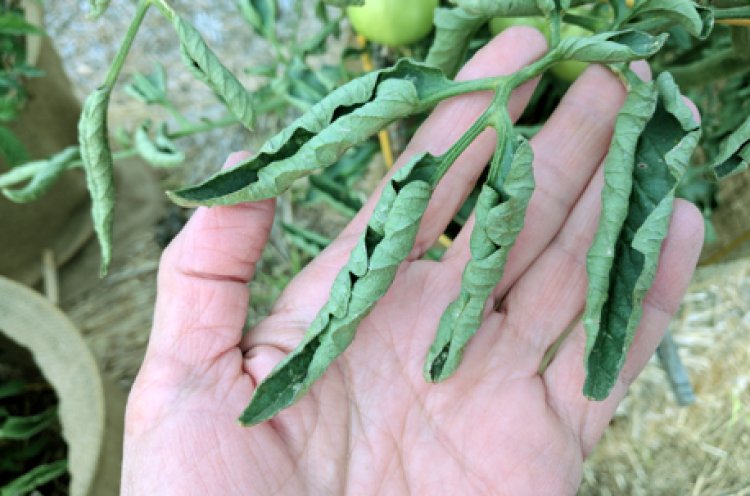Tomato Plant Care Tips
Tomato plant maintenance is a significant activity that enables you to quickly harvest ripe, fresh, and delicious tomatoes from your backyard garden. No matter how seasoned or inexperienced a gardener you are, certain issues and diseases will inevitably affect your tomato plants.
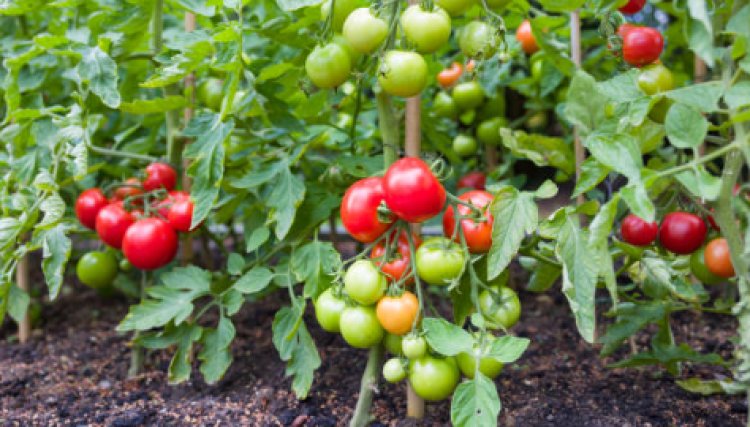
The following tomato care tips will help you prevent and reduce the spread and harm caused by typical tomato issues that you can encounter when growing tomatoes in your garden.
Tomato Blight
Tomato blight is caused by a fungus. Tomato early blight causes yellowing of the leaves around dark spots that create concentric circles on tomato leaves. Dark, damaged leaves with a white fungus forming on the lower leaf are signs of tomato late blight.
Practice crop rotation in your garden and avoid planting tomatoes in the same area again to prevent tomato blight.
Use a garden fungicide if you notice these early symptoms in your tomato plant. Destroy any fallen contaminated leaves that have fallen. They shouldn't be put in the compost. To stop fungus spores, you can also mulch the plant's base with wood chips or straw.

Skin Cracking
Cracks may show up on the shiny skin of tomatoes. A low water supply can result in skin cracking as the plant ripens. The plants will consume more water than necessary if you water them after making them thirsty for a while and their skins will burst to lead to skin cracking.
You should mulch the soil and water the plant consistently to avoid skin cracking. Although tomatoes with cracked skin are still edible, you should pick them up as soon as you can because they are vulnerable to rot and insect damage.

Poor Fruit Setting
One of the main issues with tomato plants is when they only produce leaves but no fruit. Too much nitrogen in the soil or planting tomato seedlings too close together cause poor fruit setting.
Before planting tomato seeds, examine your soil and sow them far enough apart to prevent poor fruit setting. Shake the flower-covered branches to create the illusion of wind and move the pollen from the stamens to the pistils.

Blossom End Rot
Blossom end rot is the black spots on tomatoes' undersides that are opposite the stem. The plant appears healthy except for the black areas that have a leathery appearance.
Insufficient calcium or inconsistent watering are the two main causes of blossom end rot. Make sure the soil has adequate calcium and a high enough pH so that the tomato plant can absorb the calcium that is present. Additionally, water the plant at the same time every day to keep the soil constantly moist. Mulching can be useful as well.
If you see those dark patches on your tomato plants, remove them to stop the problem from spreading. After that, pour equal amounts of milk and water into the soil for a quick boost in calcium.
If you don't like picking your own fruit, you can use a calcium spray to stop the issue from getting worse. To avoid the leaves burning, spray either in the morning or in the evening.
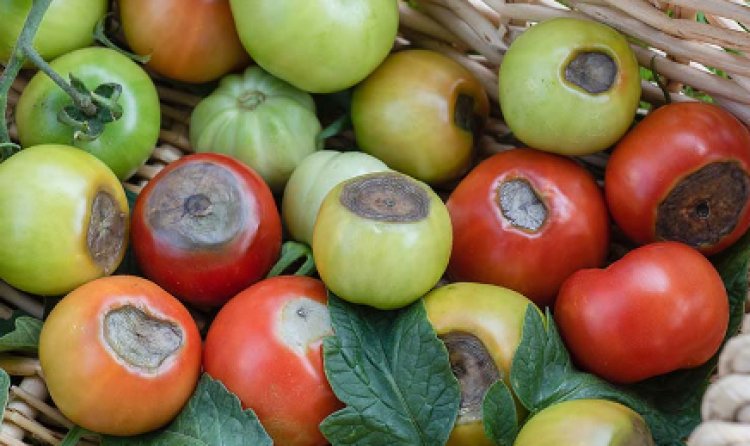
Tomato Sunscald
Sunscalds on tomatoes cause the skin to appear white and paper thin. When the plant doesn't have enough leaves to provide tomatoes with the necessary shelter from the sun, tomatoes can get sunscalds from being exposed directly to the sun.
Using tomato cages or tomato stakes can be very beneficial. Next, don't over-prune the leaves, and stay away from placing the plant in full sunlight. There is no cure for tomato scalds, so give your tomato plants enough shade to flourish. The process is slowed down or stopped by allowing tomato fruits that are about to ripen, to do so indoors.

Hornworms
Hornworms may be at work if you notice holes in the leaves or missing leaves because they can devour your tomato plant overnight due to their outstanding camouflage abilities.
They are caused by nature; to avoid them, plant marigold plants near tomatoes since their potent floral aroma naturally deters hornworms.
If you want to stop the hornworms from infesting the entire tomato patch, you can also use an insecticide spray.
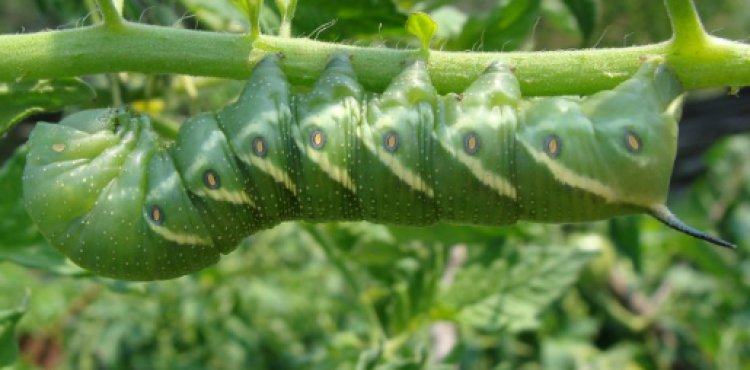
Bacterial Wilt
Bacterial wilt results in the wilting of leaves and the sudden death of plants. By breaking the main stem, you can determine whether a plant has bacterial wilt or not. Put the stem in water and check for milky liquid bleeding out of the stem to make sure, put the stem in water and check for milky liquid bleeding out of the stem.
Among other things, the bacteria are brought on by humid weather and the high pH of the soil. Avoid using diseased transplants because bacterial wilt is difficult to control in infested soils. Bacterial wilt can be treated using soil fumigation. The best technique to care for tomato plants is to remove and eliminate sick plants.
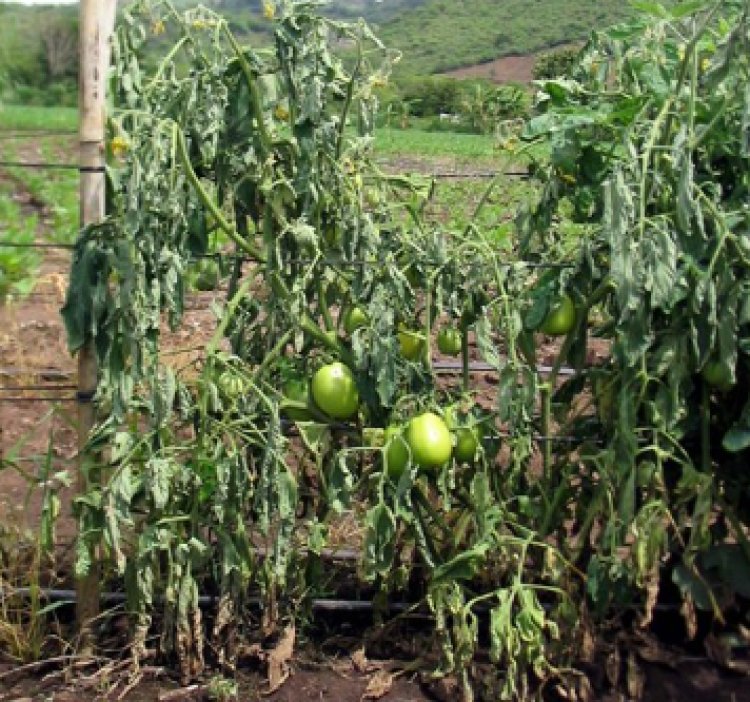
Leaf Curling
One of the most prevalent diseases of tomato plants is this one. The symptoms include plant stunting, yellow leaves, and leaves that roll upward. It can be transmitted through infected seedlings or by aphids. Avoid over-pruning and make sure the soil is well-drained to avoid this. Spray an insecticide, especially on the tops and undersides of the leaves, and avoid over-fertilizing.
